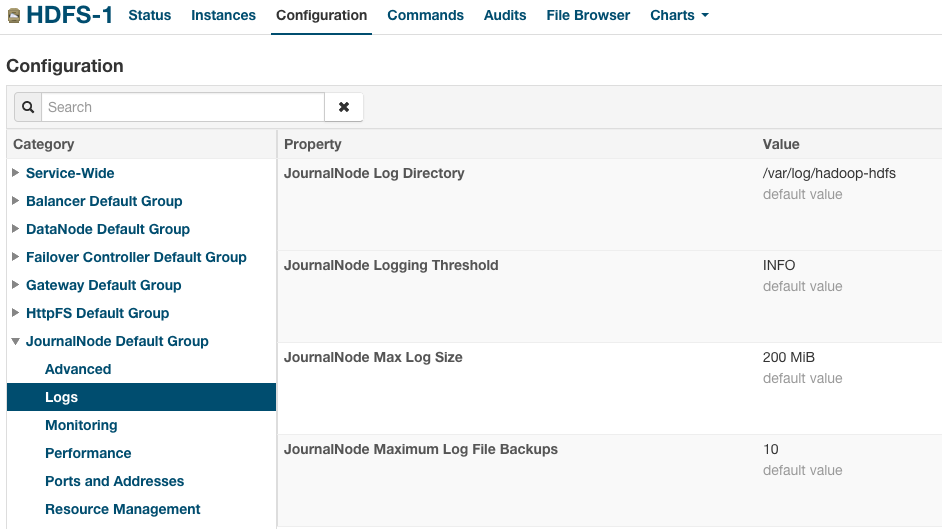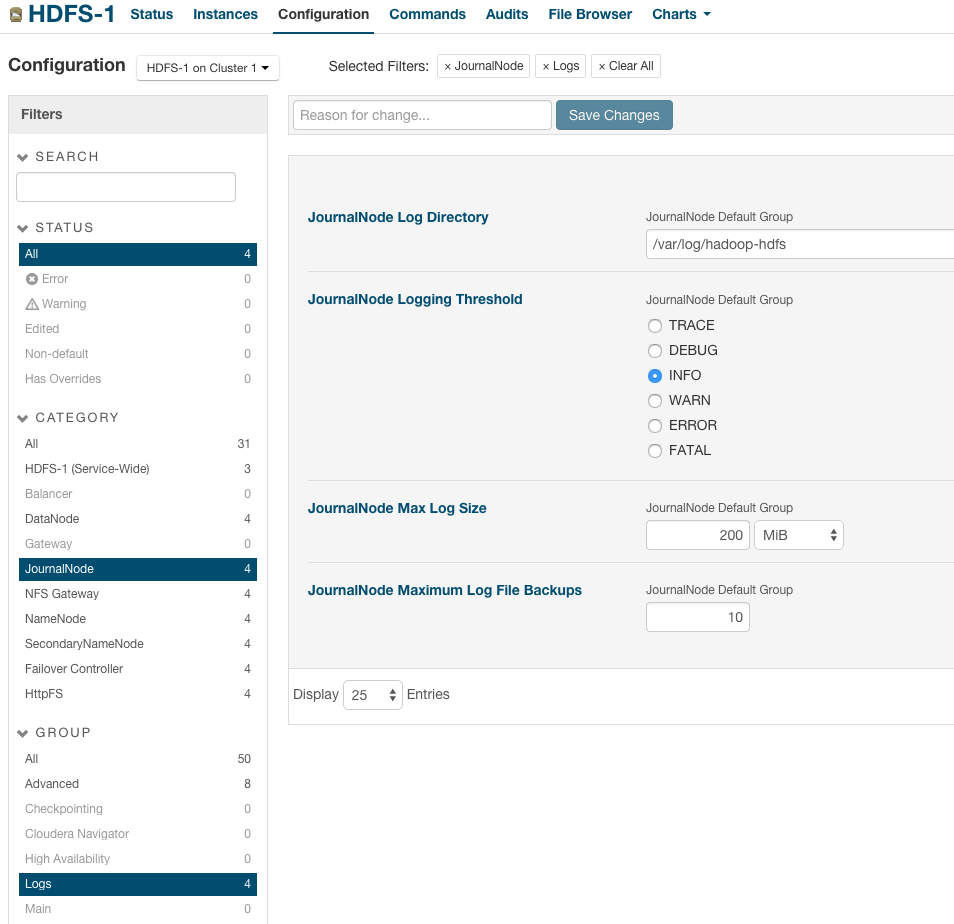Managing Services
Cloudera Manager service configuration features let you manage the deployment and configuration of CDH and managed services. You can add new services and roles if needed, gracefully start, stop and restart services or roles, and decommission and delete roles or services if necessary. Further, you can modify the configuration properties for services or for individual role instances. If you have a Cloudera Enterprise license, you can view past configuration changes and roll back to a previous revision. You can also generate client configuration files, enabling you to easily distribute them to the users of a service.
The topics in this chapter describe how to configure and use the services on your cluster. Some services have unique configuration requirements or provide unique features: those are covered in Managing Individual Services.
- classic - pages are organized by role group and categories within the role group. For example, to display the JournalNode maximum log size property
(JournalNode Max Log Size), select .

When a configuration property has been set to a value different from the default, a Reset to the default value link displays. - new - pages contain controls that allow you filter configuration properties based on configuration status, category, and group.For example, to display the
JournalNode maximum log size property (JournalNode Max Log Size), click the and filters:

When a configuration property has been set to a value different from the default, a reset to default value icon displays.